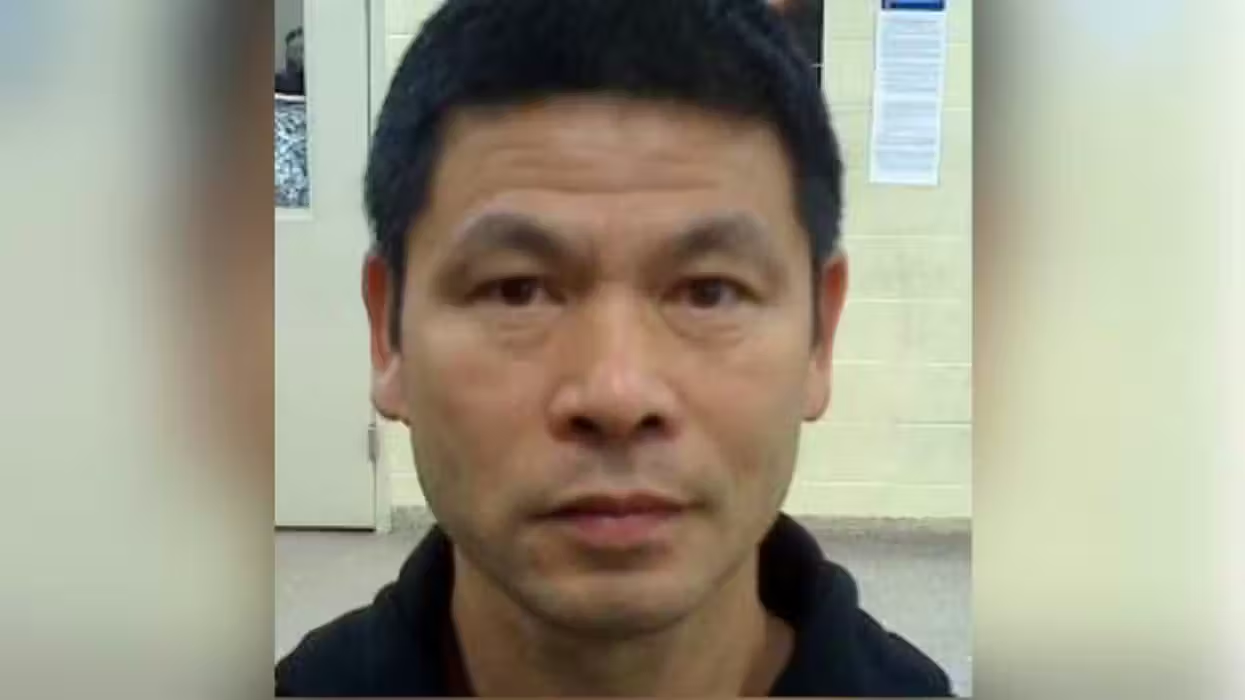The world became fascinated with a five-story tunnel boring machine digging underneath Seattle last month when "she" became stuck by an unknown object, creating a precarious situation for organizers to figure out what had stopped it.
Turns out an 8-inch diameter steel pipe brought the machine with the widest cutting face “in the world" to a halt.
 An image and diagram of what's blocking Bertha. (Image source: @BerthaDigsSR99/Twitter)
An image and diagram of what's blocking Bertha. (Image source: @BerthaDigsSR99/Twitter)
For weeks, crews had been first trying to figure out the best method to reach whatever was blocking Bertha from moving forward 60 feet below the surface. They then set to work removing enough water and dirt to reach the mystery object.
Their big break came Thursday.
[blackbirdpie url="https://twitter.com/BerthaDigsSR99/status/419225438049673216"]
According to The Seattle Times, officials identified the pipe more specifically as being 115-foot-long “well casing" that was used to measure ground water in 2002 in studies for the Alaskan Way Viaduct replacement project.
 "Bertha," the massive tunnel boring machine, was expected to spend 14 months drilling a two-mile tunnel to replace the 60-year-old Alaskan Way Viaduct. Three delays have since hit the project that began in July. The tunnel will replace the viaduct, a double deck highway along the downtown Seattle waterfront. (AP/Ted S. Warren)
"Bertha," the massive tunnel boring machine, was expected to spend 14 months drilling a two-mile tunnel to replace the 60-year-old Alaskan Way Viaduct. Three delays have since hit the project that began in July. The tunnel will replace the viaduct, a double deck highway along the downtown Seattle waterfront. (AP/Ted S. Warren)
The Times reported some conflict between project officials regarding prior knowledge of the pipe's existence:
The well site was listed in reference materials provided to bidders as part of the contract specifications, DOT says. “I don’t want people to say WSDOT didn’t know where its own pipe was, because it did,” said DOT spokesman Lars Erickson. However, Chris Dixon, project director for contractor group Seattle Tunnel Partners, said the builders presumed there would be no pipe in the way, because casings are customarily removed after use.
Dixon said the tunnel-machine crew first noticed metal pieces in Bertha’s conveyor system in early December — when Bertha’s rotation actually shoved a segment of pipe through the surface, prompting crews to remove a 55-foot-long piece. However, the machine kept grinding forward just fine, Dixon said, leading STP to have what he called “a false sense of security” that things would be OK.
[…]
Downtown Seattle contains some of the most frequently poked and studied ground on earth, which makes the blockage all the more confounding. Five-foot diameter holes were drilled alongside the tunnel path to install concrete pilings that protect the old viaduct; the contractors have used ground-penetrating radar; and geotechnical experts drilled test holes, which didn’t hit this particular object
 Project manager Chris Dixon, left, and Washington Dept. of Transportation deputy administrator Matt Preedy stand in front of a large mural depicting a finished State Route 99 tunnel as they address a news conference Friday, Jan. 3, 2014, in Seattle. The two said that a steel pipe is at least partly to blame for halting the massive tunnel-boring machine beneath downtown Seattle for the highway project. The state Department of Transportation said the 8-inch-diameter pipe, a well casing installed by the department in 2002 to monitor groundwater, was discovered protruding through an opening in the machine's cutter-head. The tunneling machine, known as "Bertha," is digging a new path for SR 99, one of the region's primary north-south arterials. It's been halted since encountering a mysterious obstruction Dec. 6. (AP/Elaine Thompson)
Project manager Chris Dixon, left, and Washington Dept. of Transportation deputy administrator Matt Preedy stand in front of a large mural depicting a finished State Route 99 tunnel as they address a news conference Friday, Jan. 3, 2014, in Seattle. The two said that a steel pipe is at least partly to blame for halting the massive tunnel-boring machine beneath downtown Seattle for the highway project. The state Department of Transportation said the 8-inch-diameter pipe, a well casing installed by the department in 2002 to monitor groundwater, was discovered protruding through an opening in the machine's cutter-head. The tunneling machine, known as "Bertha," is digging a new path for SR 99, one of the region's primary north-south arterials. It's been halted since encountering a mysterious obstruction Dec. 6. (AP/Elaine Thompson)
The Times reported that the officials didn't alert the public about the pipe until now because the team didn't initially think it was the primary issue. Many thought it was likely a boulder blocking the $80 million machine.
"Other potential factors include changing soil conditions that may have caused excessive wear of cutting tools, potential objects in front of the cutterhead or objects in the lower portion of the excavation chamber that still aren't visible," a statement from the state'sDepartment of Transportation read, according to the Seattle Post-Intelligencer.
Dixon told KIRO-TV the tunnel boring machine is able to cut through rock, clay and concrete, but it can't battle metal objects very well.
He added that pipes used in the ground water measuring studies are usually removed afterward, prompting crews to wrongly assume the same had been done with this pipe.
Watch KIRO's report about the blockage:
A plan for how the pipe will be removed has not yet been announced, according to the Times.
Bertha is helping dig a tunnel that will replace the Alaskan Way Viaduct on Highway 99.
--
[related]

 An image and diagram of what's blocking Bertha. (Image source:
An image and diagram of what's blocking Bertha. (Image source: 





